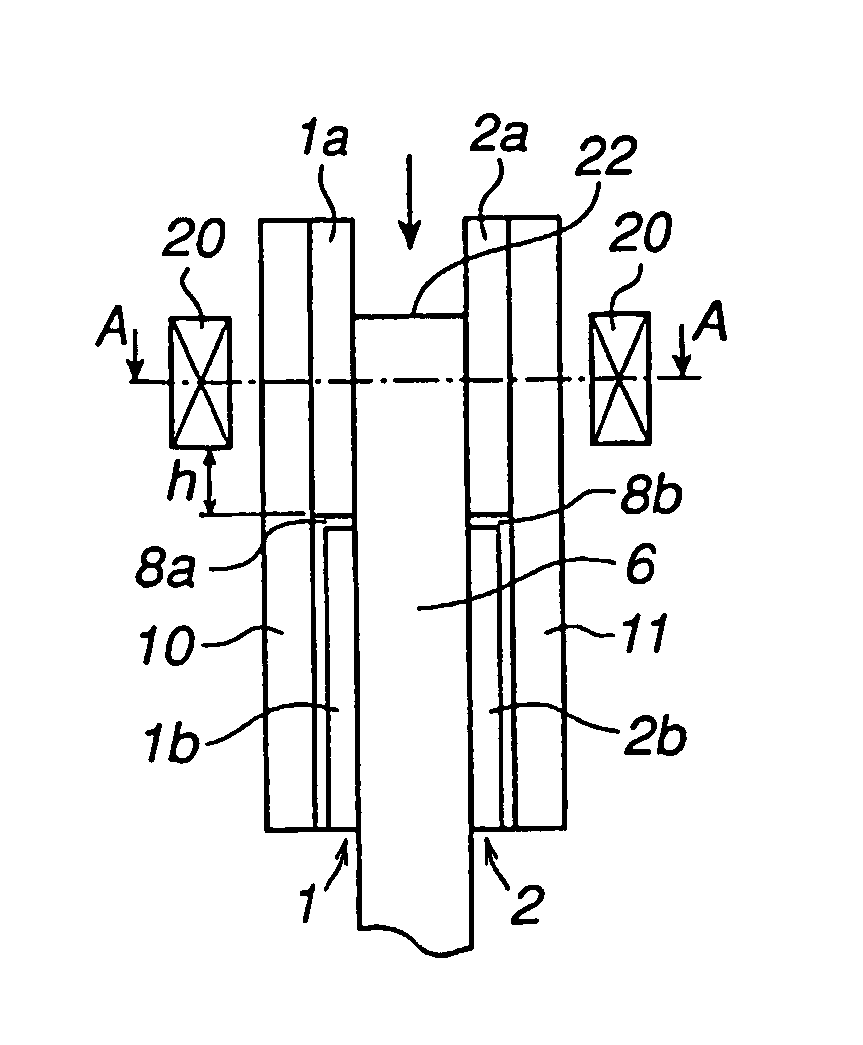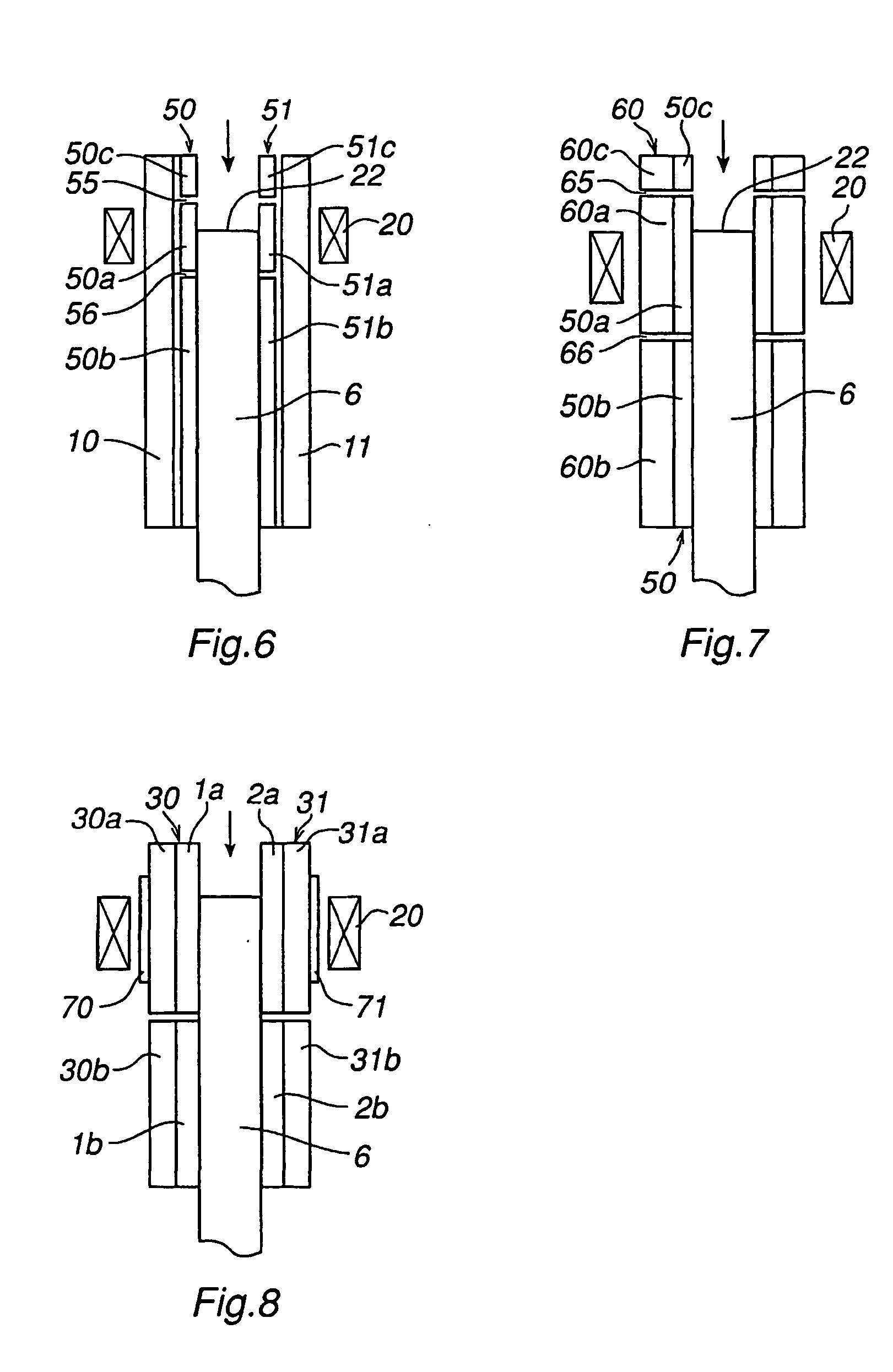Device for casting of metal
a technology of metal casting and metal parts, applied in the direction of metal casting devices, continuous or semi-continuous casting devices, etc., can solve the problems of inefficient current distribution, achieve high inward directed forces, reduce induced power losses, and improve efficiency
- Summary
- Abstract
- Description
- Claims
- Application Information
AI Technical Summary
Benefits of technology
Problems solved by technology
Method used
Image
Examples
Embodiment Construction
[0030] A mould for continuous casting is open at both ends in the casting direction and comprises means for ensuring that the formed cast strand continuously leaves the mould. The mould is continuously supplied with a flow of hot molten metal.
[0031] While the melt passes through the mould, it is cooled and solidifies at least partly, whereby a cast strand is formed.
[0032]FIGS. 1 and 2 show a device for continuous casting of metal. The device comprises a mould, which comprises a number of mould elements 1, 2, 3 and 4 which together form a casting mould arranged to receive a liquid metal 6. The mould elements 1-4 are plate-formed and will be designated mould plates in the following. A mould plate is usually made of copper or a copper-based alloy, which may be provided with a coating on the inner surface which faces the melt during operation. The mould plates 1 and 2 also face each other and constitute short sides in the casting mould. Further, the mould plates exhibit a high thermal...
PUM
| Property | Measurement | Unit |
|---|---|---|
| distance | aaaaa | aaaaa |
| frequency | aaaaa | aaaaa |
| frequencies | aaaaa | aaaaa |
Abstract
Description
Claims
Application Information
 Login to View More
Login to View More - R&D
- Intellectual Property
- Life Sciences
- Materials
- Tech Scout
- Unparalleled Data Quality
- Higher Quality Content
- 60% Fewer Hallucinations
Browse by: Latest US Patents, China's latest patents, Technical Efficacy Thesaurus, Application Domain, Technology Topic, Popular Technical Reports.
© 2025 PatSnap. All rights reserved.Legal|Privacy policy|Modern Slavery Act Transparency Statement|Sitemap|About US| Contact US: help@patsnap.com



